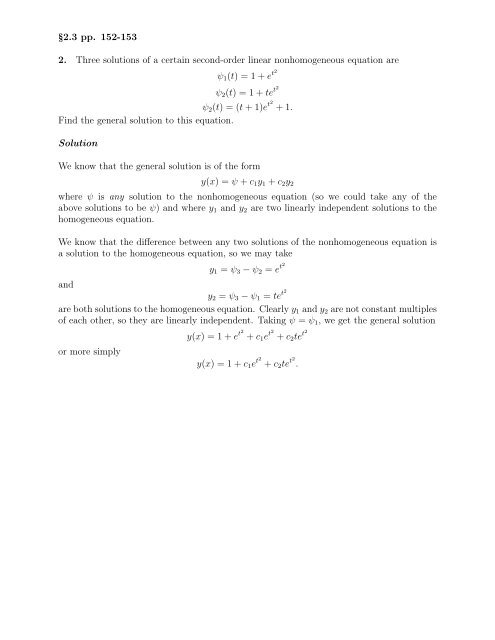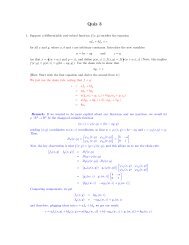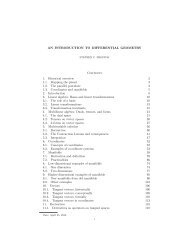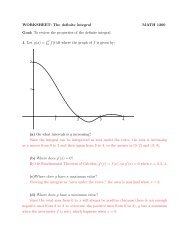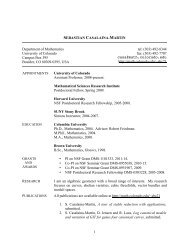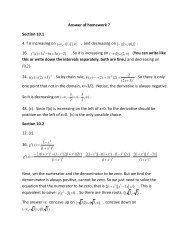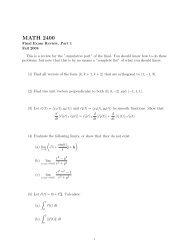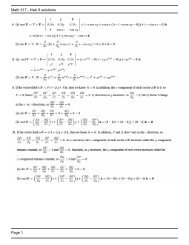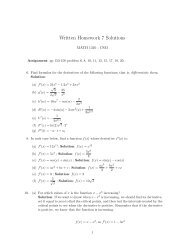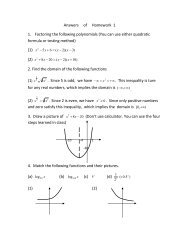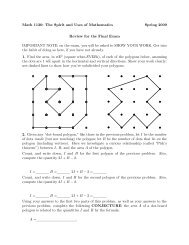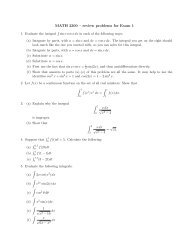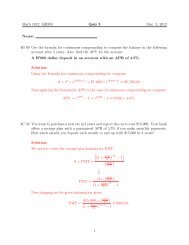HW 5 solutions
HW 5 solutions
HW 5 solutions
Create successful ePaper yourself
Turn your PDF publications into a flip-book with our unique Google optimized e-Paper software.
§2.3 pp. 152-153<br />
2. Three <strong>solutions</strong> of a certain second-order linear nonhomogeneous equation are<br />
ψ1(t) = 1 + e t2<br />
ψ2(t) = 1 + te t2<br />
ψ2(t) = (t + 1)e t2<br />
+ 1.<br />
Find the general solution to this equation.<br />
Solution<br />
We know that the general solution is of the form<br />
y(x) = ψ + c1y1 + c2y2<br />
where ψ is any solution to the nonhomogeneous equation (so we could take any of the<br />
above <strong>solutions</strong> to be ψ) and where y1 and y2 are two linearly independent <strong>solutions</strong> to the<br />
homogeneous equation.<br />
We know that the difference between any two <strong>solutions</strong> of the nonhomogeneous equation is<br />
a solution to the homogeneous equation, so we may take<br />
and<br />
y1 = ψ3 − ψ2 = e t2<br />
y2 = ψ3 − ψ1 = te t2<br />
are both <strong>solutions</strong> to the homogeneous equation. Clearly y1 and y2 are not constant multiples<br />
of each other, so they are linearly independent. Taking ψ = ψ1, we get the general solution<br />
or more simply<br />
y(x) = 1 + e t2<br />
+ c1e t2<br />
+ c2te t2<br />
y(x) = 1 + c1e t2<br />
+ c2te t2<br />
.


